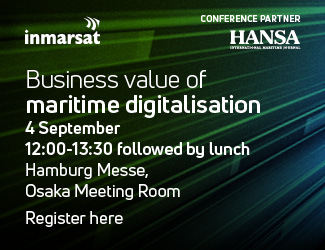
Like many other industries, the COVID-19 (Corona) virus outbreak has hit the cruise industry very hard, resulting in a record reduction of companies’ market capitalization. This will most likely result in a slowdown in contracting. But history has shown us that the cruise industry has always recovered after major shocks, like 9/11 and the global fi[ds_preview]nancial crisis of 2007/08.
Forward orders for new cruise ships remain at record levels. Almost 120 newbuildings are scheduled for delivery through 2027, and I don’t expect that contracts will be cancelled, since customer confidence will most likely return quickly.
Under a normal setting the cruise industry has had an annual growth in the 6% range, while 2020 will almost certainly be a negative year. But in the long run the cruise sector, which only represents 3-4 % of the total leisure industry, will take a larger share of tourism.
A topic that will stay is the societal pressure to reduce the environmental footprint of cruises. In the market we see zero-carbon emissions as a clear ambition, but it will take time. Achieving zero emission will require major developments and investments in ships, infrastructure and supply chains. LNG is presently the only mature fuel for a lower GHG footprint, but other options are being tested. The cruise industry can help to lead this innovation, on behalf of the maritime sector.
Environmental regulation has hitherto been relatively predictable and with time to adjust, but we are starting to see quicker and tougher local regulations kicking in. One major challenge with this kind of regulation is that it doesn’t follow the established implementation timelines. For instance, emissions regulations covering Norway’s World Heritage Fjords will effectively ban vessels from entering. This regulation is the first of its kind and, I believe, just the beginning.
To ensure further growth beyond 2030, vessel design and ship facilities need to appeal to different passenger segments. For instance, while expedition cruises have been mainly about the destination in the past, ship attractiveness will become more important. The ultra-luxury niche is also being modernized currently, and I won’t be surprised if we see an era of residential vessels. Finally, older cruise vessels will be replaced by larger one. Therefore, the industry relies on both yard competence and capacity.
Some yards that entered the cruise market in recent years struggled to deliver on time and within planned cost. We saw financial losses and bankruptcies. However, I expect there will be a steep learning curve amongst yards, with more players entering cruise shipbuilding, and some of these will succeed, positioning themselves as future solid newbuilding yards.
As one of the most dynamic and forward-looking maritime segments, the cruise industry has decades of further innovation ahead, and I am strongly convinced that the sector will successfully tackle both economic and environmental challenges. With this I still expect the cruise industry will be perceived as one of the most environmentally friendly ways of spending your vacation by 2050.
For HANSAs »Speakers Corner« by Helge Hermundsgård, Business Development Manager and Cruise Expert, DNV GL – Maritime














